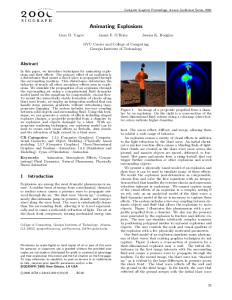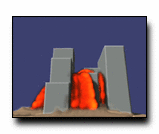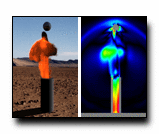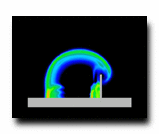Animating Explosions

Download Paper
Download Bibtex
Authors
- Gary D. Yngve
- James F. O'Brien
- Jessica K. Hodgins
Related Links
Abstract
In this paper, we introduce techniques for animating explosions and their effects. The primary effect of an explosion is a disturbance that causes a shock wave to propagate through the surrounding medium. This disturbance determines the behavior of nearly all other secondary effects seen in explosions. We simulate the propagation of an explosion through the surrounding air using a computational fluid dynamics model based on the equations for compressible, viscous flow. To model the numerically stable formulation of shocks along blast wave fronts, we employ an integration method that can handle steep gradients without introducing inappropriate damping. The system includes two-way coupling between solid objects and surrounding fluid. Using this technique, we can generate a variety of effects including shaped explosive charges, a projectile propelled from a chamber by an explosion, and objects damaged by a blast. With appropriate rendering techniques, our explosion model can be used to create such visual effects such as fireballs, dust clouds, and the refraction of light caused by a blast wave.
Citation
Gary D. Yngve, James F. O'Brien, and Jessica K. Hodgins. "Animating Explosions". In Proceedings of ACM SIGGRAPH 2000, pages 29–36, August 2000.
Supplemental Material

Paper video on YouTube

Buildings

Fireball

Hallway Pressure

Mortar









